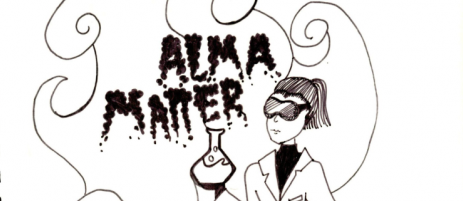Among the many new whiz-bang features of ISC-3, the BioMakerSpace stands out for its promise of democratized molecular biology. In this lab space, W&M students will soon be able to use the tools of genetic engineering for their own personal scientific endeavors. This initiative, lead by Dr. Margaret Saha, aims to encourage citizen science and to introduce the W&M scientific community to engage in more creative practices in science.
But what is a Makerspace in the first place? These are workshops for community-based, entry-level engineering. They contain expensive, complex equipment that can do amazing things for people who likely could not afford to use them otherwise. They are places for collaboration and group problem solving in addressing design issues. There are several Makerspaces on the W&M campus: the Small Hall Makerspace, the William & Mary Innovation and Design Studio in the School of Business, the STEM Education Alliance Makerspace in the School of Education, and now the BioMakerSpace in ISC-3.
The BioMakerSpace encourages the utilization of known biological parts, or “bricks” to make new living systems, and in this way represents the increasing influence of synthetic biology in the life sciences. Synthetic biology is the emergent field made possible though a massive surge in DNA editing technologies in the past decade that regards molecular biology from an engineering standpoint. With our new capabilities for designing and editing DNA, genomic material has become another medium for invention. In 2014, Bill Gates ceded this fact to be true, and that we are at the threshold of a profound era of engineering in the life sciences: “If you want to change the world in some big way, that’s where you should start – biological molecules.”
Currently, the BioMakerSpace is open to a few biology interest groups that share its equipment. These include the nationally acclaimed iGEM (International Genetically Engineered Machine) team; the members of which continue to work around the clock to prepare to defend their 2015 first place win at the national competition in November. The freshman honors lab explore the gene expression of Mycobacteria alongside students in the vertebrate biology lab sections who are working on individual projects to better understand the mechanics behind filter feeding in certain species of fish.
The hope is that this biological workshop will soon open up to more scientists so that it may become a communal, shared lab space life where interdisciplinary projects can flourish. One such collaborative project proposed by Dr. Saha to encourage this dynamic includes the design and construction of a turbidostat: a machine that uses a laser to measure the turbidity of a cell culture, then uses that information to add the appropriate reagents to maintain its consistency. Another involved the construction of a 4D cell-printing machine. These projects have biological interests, but they may require the engineering expertise of a physicist or the programming know-how of a computer scientist. At W&M, physical barriers have separated these fields, and it follows that the lack of shared space may have led to a lack of collaboration and innovation. With designated interdisciplinary and co-opted research “studios” like the BioMakerSpace, this campus can expect to see a series of exciting scientific initiatives take shape that are, for only a limited time, unforeseen.

